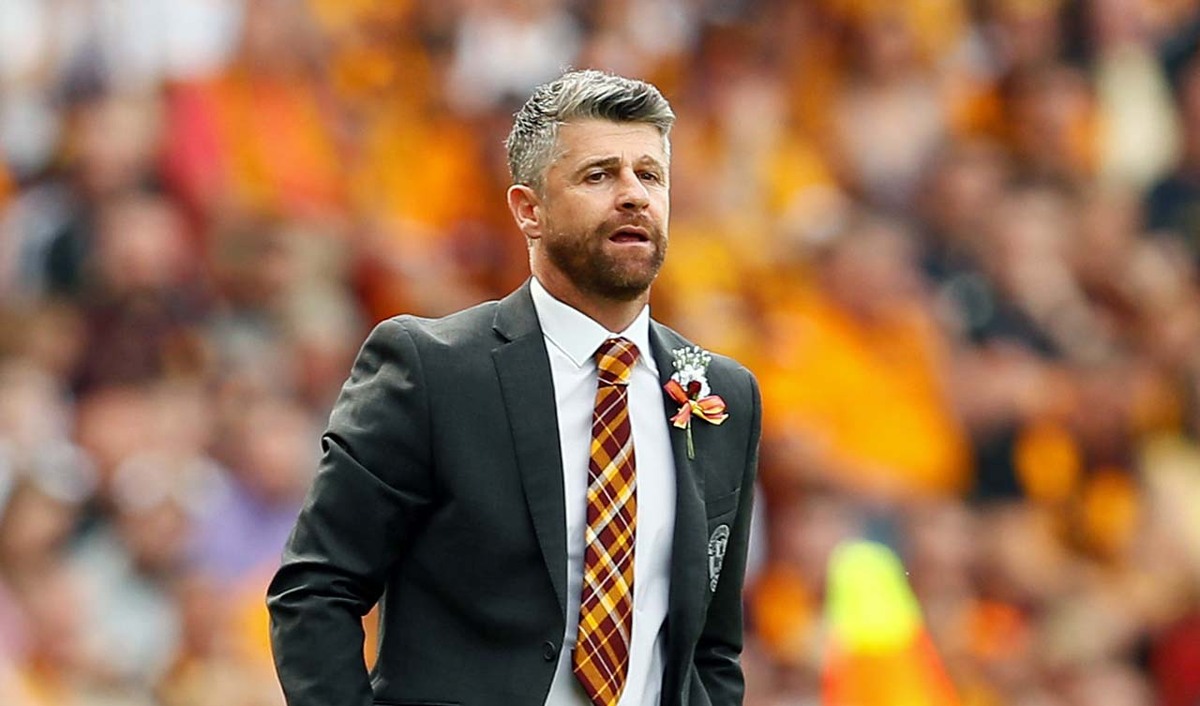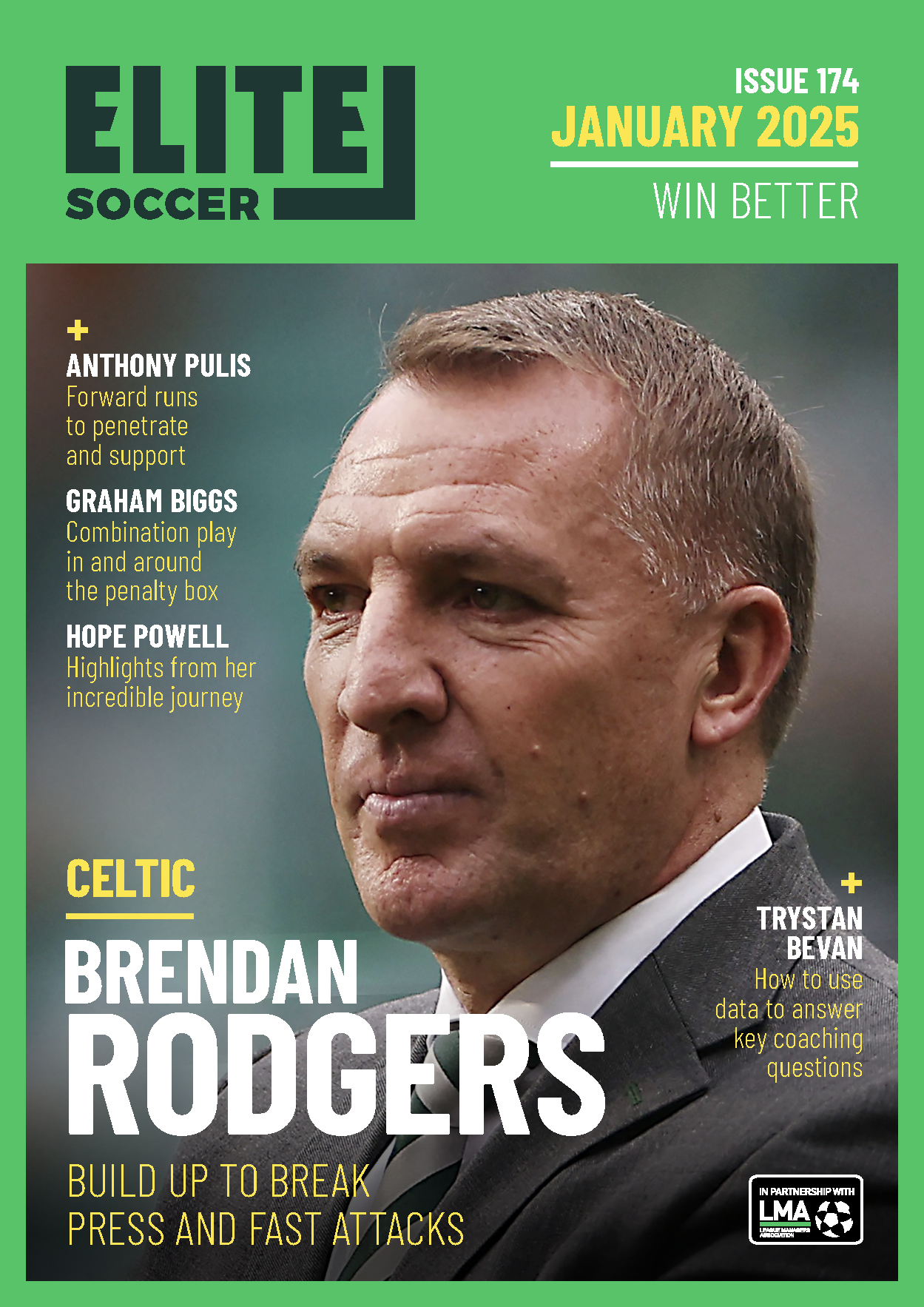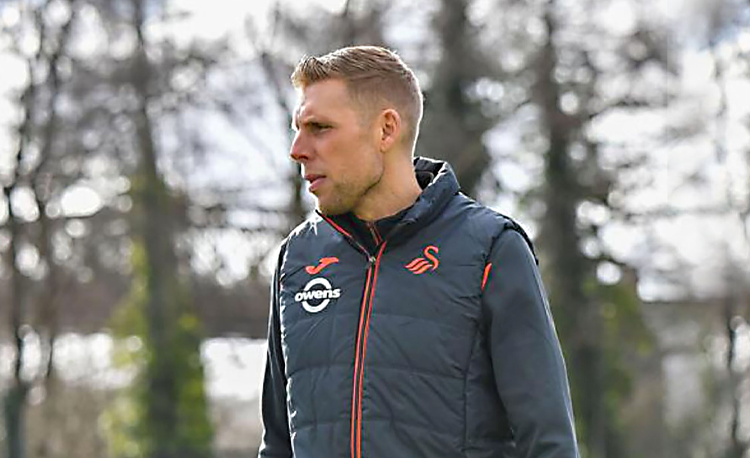You are viewing 1 of your 1 free articles
Attacking duels
Create 1v1 and 2v2 attacking duels in the final third to help players understand how to use their body strength when receiving the ball with their back to goal.
| Area | Half a pitch |
| Equipment | Balls, bibs, cones, 6 poles, 1 full size goal |
| No. of Players | Up to 14 players + 1 goalkeeper |
| Session Time | Three point finishing: 12mins, 1v1 & 2v2 with a cross: 12mins |
This session is focused on creating 1v1 and 2v2 attacking duels in the final third. We encourage players to use their body strength when receiving the ball with their back to goal and both activities in this session help players to understand how to do this.
It shows players how to use their body to make contact with opponents to allow them to get into good positions and maintain possession under physical pressure.
We can use this as a fitness and strength session, as well as an attacking or defending session, depending on what we decide to focus on with our coaching.
The players enjoy it as it gives them numerous opportunities to take on opponents in the final third and creates plenty of chances to take realistic strikes at goal from different angles and receiving areas.
What do I get the players to do?
Three point finishing
We set up on half a pitch, with a goal and goalkeeper at one end and a pole positioned in the wide channel. We’re using nine outfield players split into two teams of four, plus an extra defender (this role could be filled by a coach with a tackle pad).
One team starts off on the by-line at the end of the wide channel (station 1). On the coach’s call, the first two players race to the pole – the inside player then cuts in to the edge of the penalty area to receive a pass from the other team lining up at station 3. He receives the ball with his back to goal under pressure from the yellow defender, whose sole role is to jostle the attacker as he is receiving.
The attacker turns the defender and then attempts to score past the keeper, as shown [1a]. After shooting, the attacker turns to receive a second ball from the coach at station 2 and attempts to score again.
1a
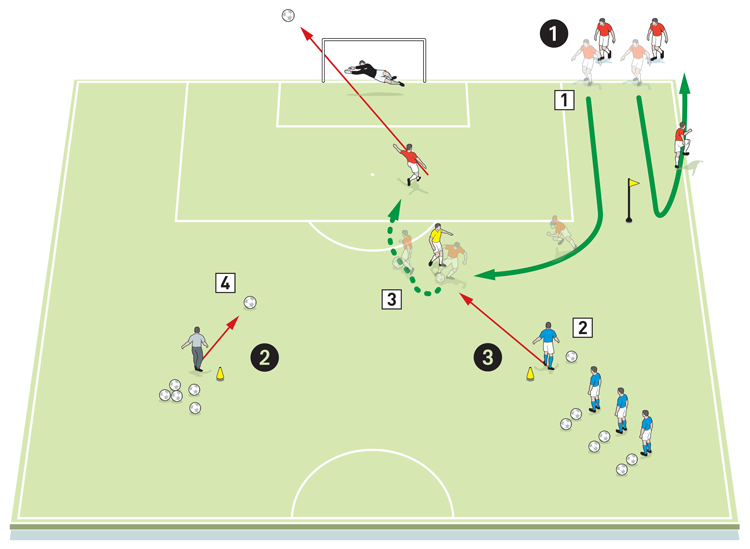
2. The blue player at station 3 passes into the attacker
3. The red attacker receives with his back to goal under pressure from the yellow defender, whose role is just to jostle him. The attacker turns the defender to go 1v1 with the keeper
4. After the red attacker has taken his first shot, the coach plays a second ball in. The attacker receives and tries to score again
Next, the attacking player turns and defends against the first player at station 3, who now attacks the goal 1v1, as shown [1b]. In this part the yellow defender is inactive.
1b
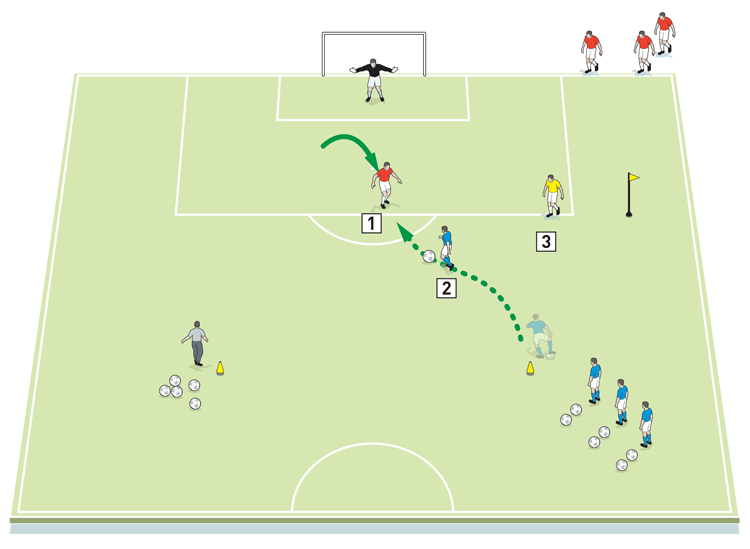
2. The first player at station 3 now attacks the goal in a 1v1 against the red player
3. The yellow defender is not active in this part of the attack
Play for six blocks of two minutes, swapping team roles each time.
What are the key things to look out for?
We want to see the two attackers using their speed and strength to get to the pole first. We then want to see the attacker using his strength to hold off the defender, who tries to grapple with him from behind as he receives the ball with his back to goal. This means the attacker needs to be able to receive the ball using the correct body shape while holding off the physical pressure of the defender.
The attacker also needs to demonstrate an ability to keep possession, as at times the session can break down when finishing if the forwards become tired after all the contact and hold up play.
To make the session realistic, we need to see the defender working hard to stop the attacker turning.
What do I get the players to do next?
1v1 & 2v2 with a cross
We set up on half a pitch with a goal and a goalkeeper at one end, and six poles positioned as shown. We’re using 14 outfield players split into six attackers and six defenders, plus two servers.
The six blue attackers start on the middle poles, with three on each side of the pitch, while the reds are defenders and they start on the bottom poles with three on each side.
On the coach’s call, the first blue attackers on each side sprint around the top poles and back down the pitch, where one of them receives a pass from the coach at the bottom of the playing area, as shown [2a]. To put the attackers under pressure, they are pursued around the poles by the first pair of red defenders.
2a
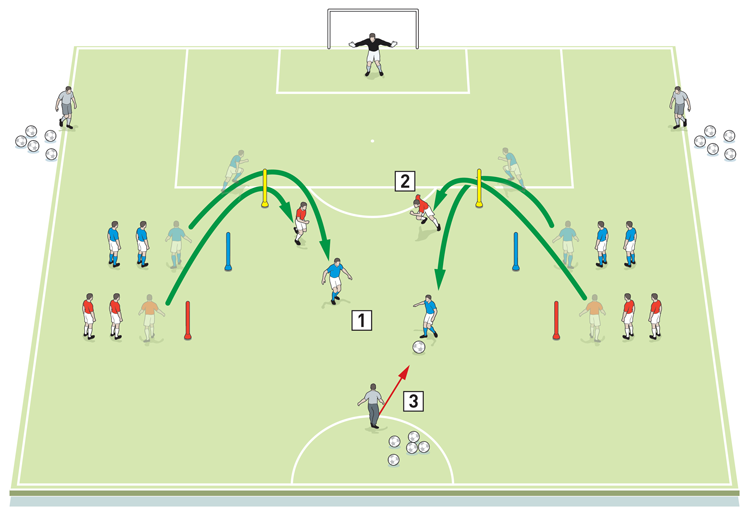
2. The attackers are pursued around the poles by the first pair of red defenders
3. The coach plays a pass towards the attackers
On receiving the pass from the coach, the two attackers turn and combine to attack the goal, going up against the defenders in a 2v2, as shown [2b].
2b
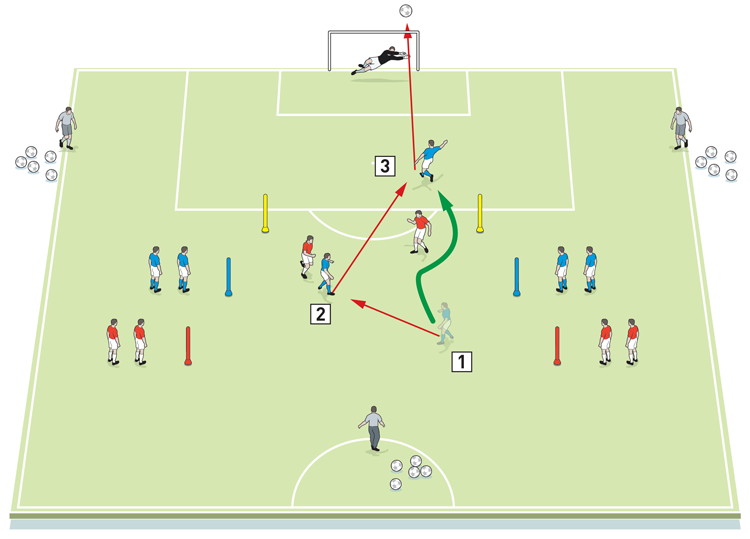
2. The attacking pair go up against the red defenders in a 2v2
3. Here the attacker scores past the keeper
Once the attackers have taken their shot and the ball has gone dead, the wide servers take turns to play balls into the penalty area from different angles and the two attackers must readjust and try to score under pressure from the defending pair, as shown [2c].
2c
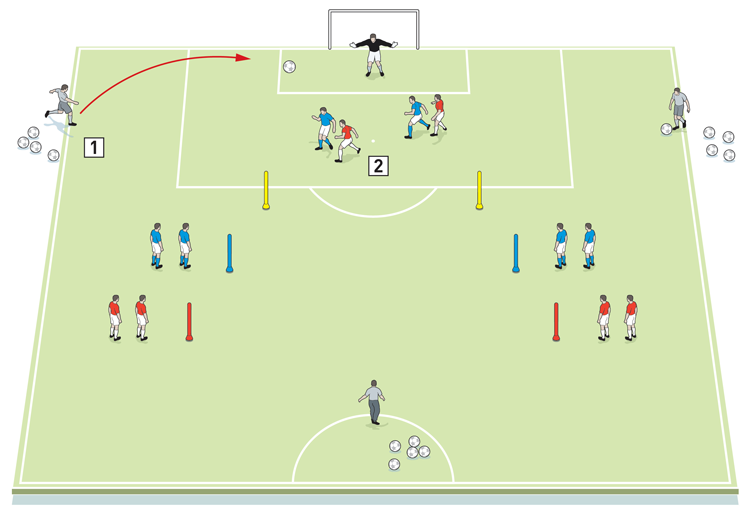
2. The attackers try to score under pressure and must be able to withstand contact from the defenders
Play for four blocks of three minutes.
What are the key things to look out for?
We want to see attackers receiving the ball and turning quickly. We also want to see them use pace with the ball and good movement without it. They must show they can keep the ball when under physical contact from the defenders and show good use of their arms to hold off the challenges.
We want to see the defenders communicating with each other and closing down space.
Related Files
Editor's Picks
Using the goalkeeper in build-up play
Pressing principles
Intensive boxes drill with goals
Penetrating the final third
Creating and finishing
My philosophy
Pressing initiation
Compact team movement
Defensive organisation
Coaches' Testimonials

Alan Pardew

Arsène Wenger

Brendan Rodgers

Carlos Carvalhal

José Mourinho

Jürgen Klopp

Pep Guardiola

Roy Hodgson

Sir Alex Ferguson

Steven Gerrard
Coaches' Testimonials

Gerald Kearney, Downtown Las Vegas Soccer Club

Paul Butler, Florida, USA

Rick Shields, Springboro, USA

Tony Green, Pierrefonds Titans, Quebec, Canada
Join the world's leading coaches and managers and discover for yourself one of the best kept secrets in coaching. No other training tool on the planet is written or read by the calibre of names you’ll find in Elite Soccer.
In a recent survey 92% of subscribers said Elite Soccer makes them more confident, 89% said it makes them a more effective coach and 91% said it makes them more inspired.
Get Monthly Inspiration
All the latest techniques and approaches
Since 2010 Elite Soccer has given subscribers exclusive insight into the training ground practices of the world’s best coaches. Published in partnership with the League Managers Association we have unparalleled access to the leading lights in the English leagues, as well as a host of international managers.
Elite Soccer exclusively features sessions written by the coaches themselves. There are no observed sessions and no sessions “in the style of”, just first-hand advice delivered direct to you from the coach.
